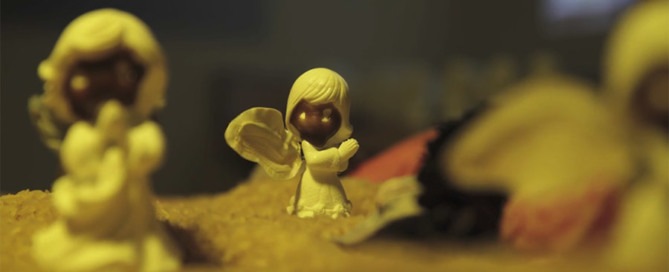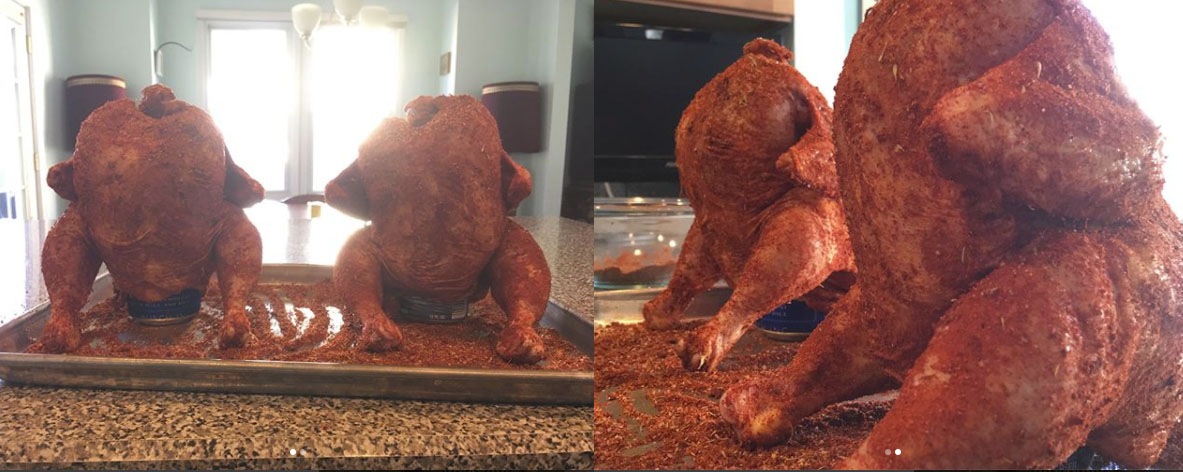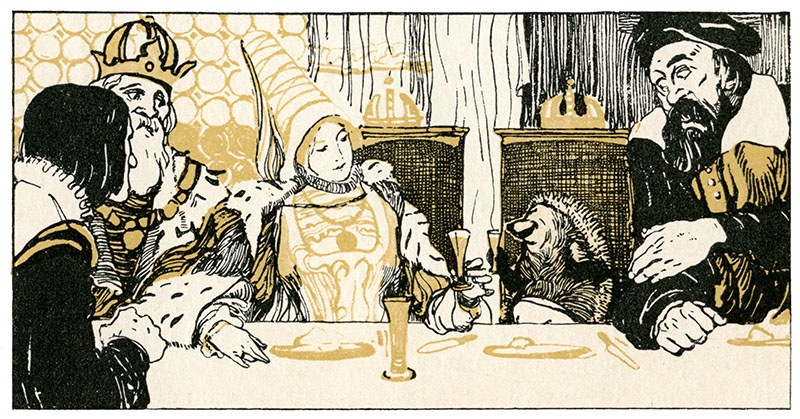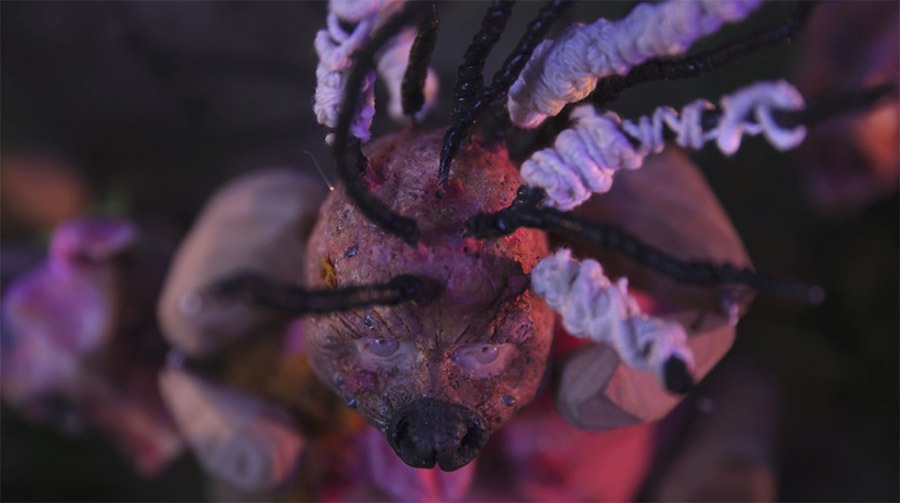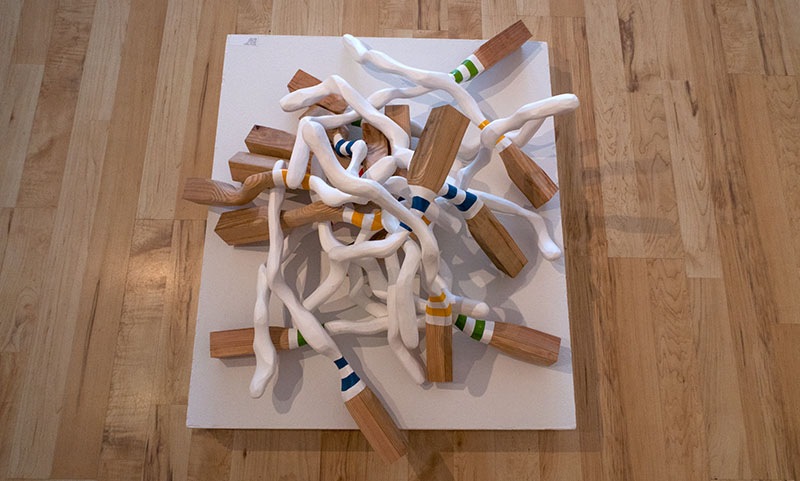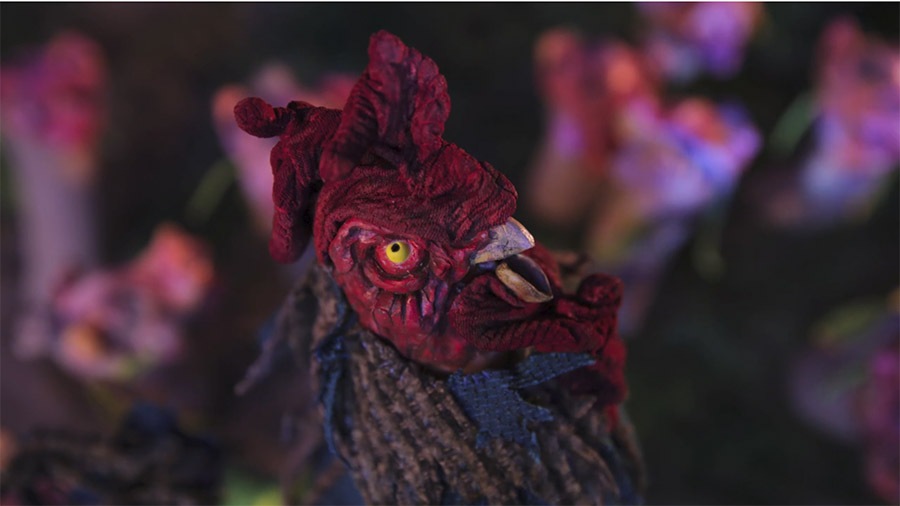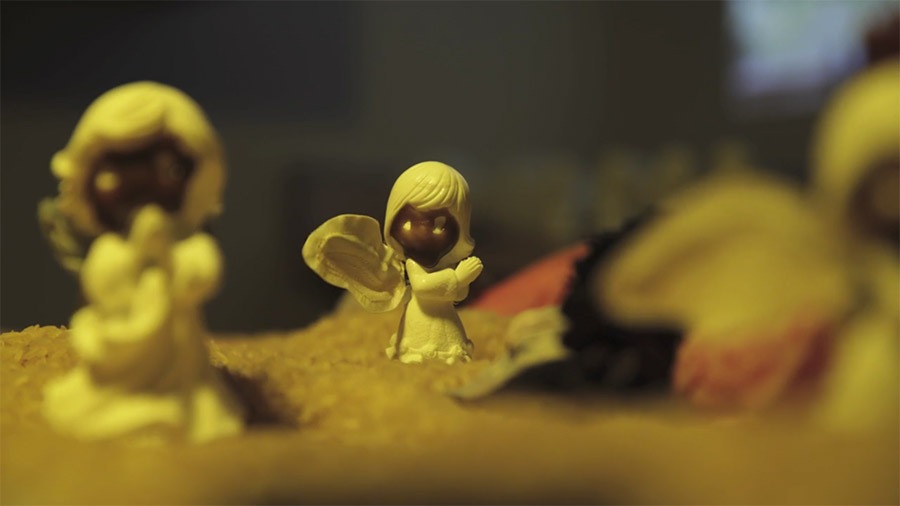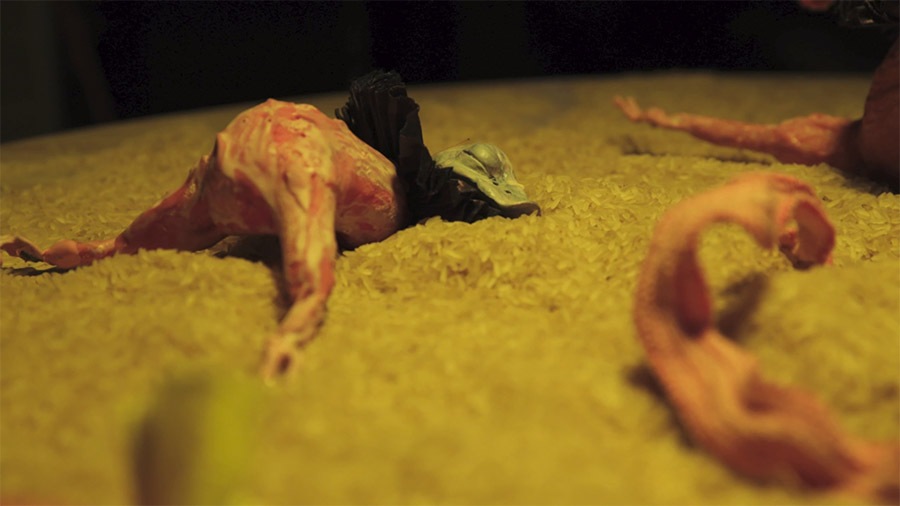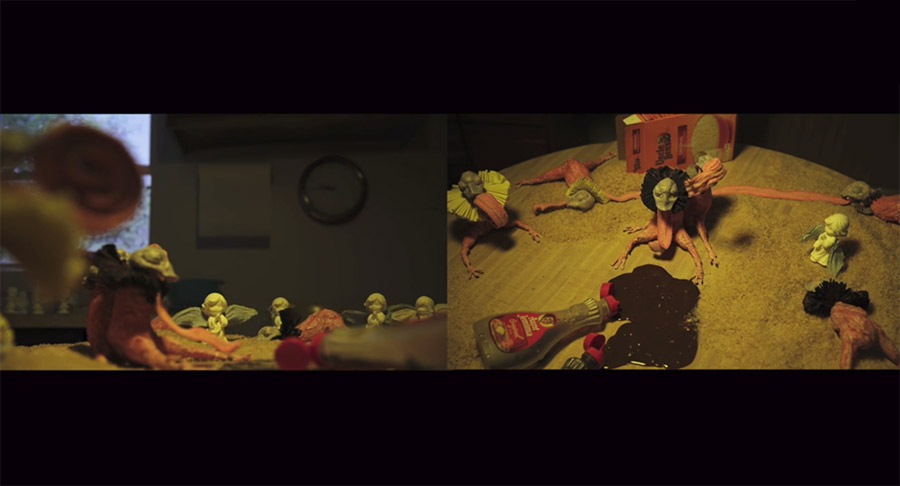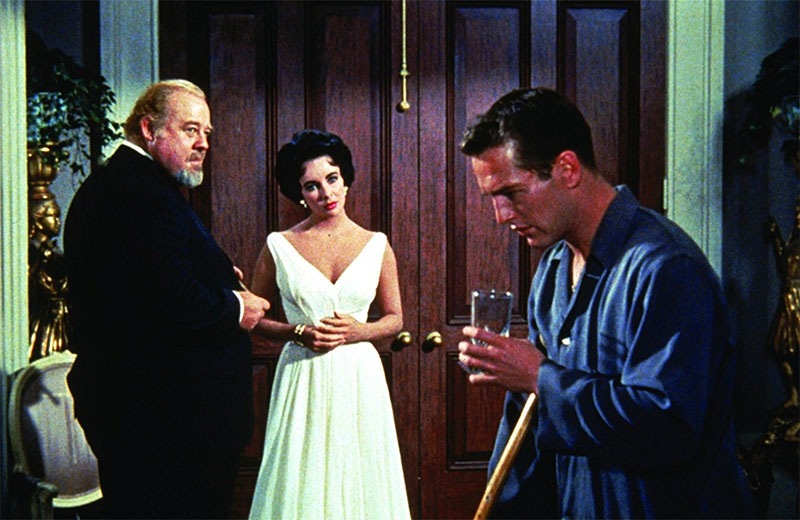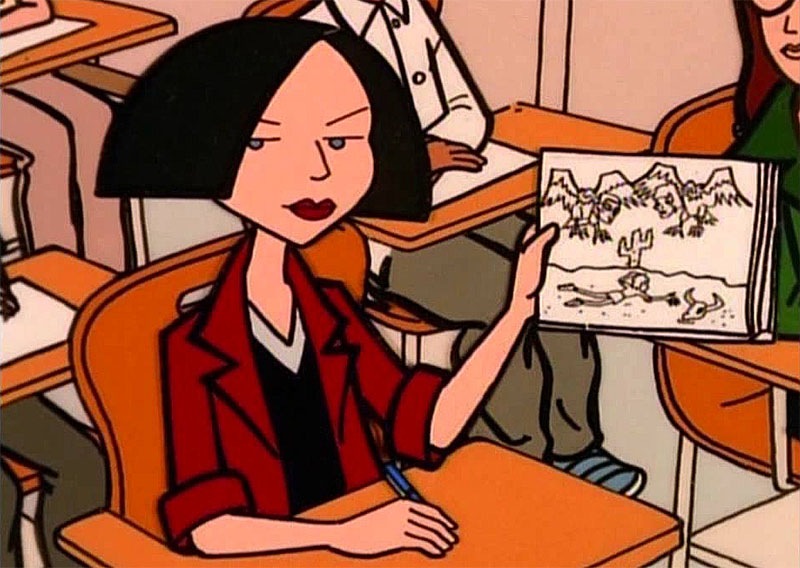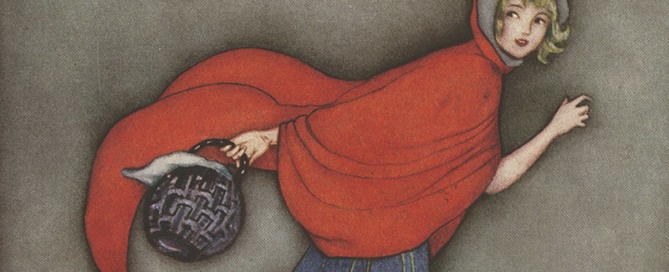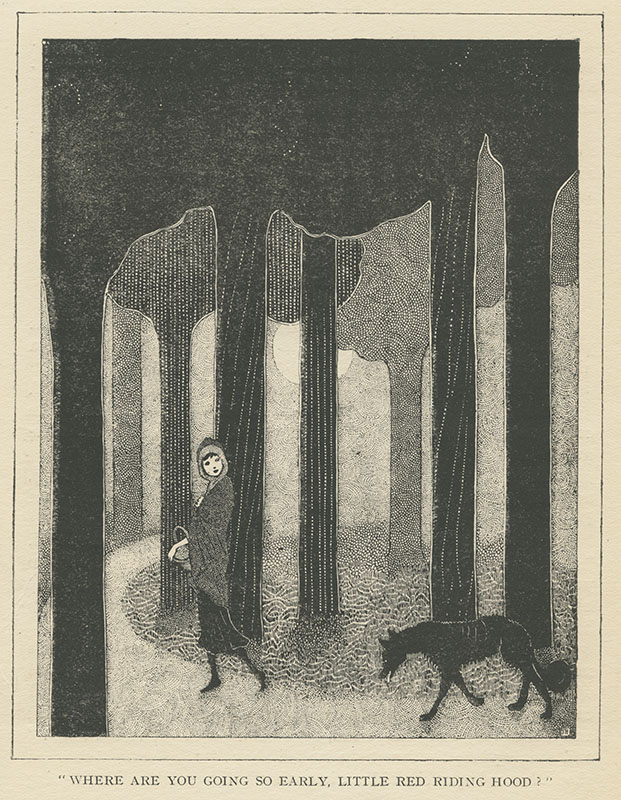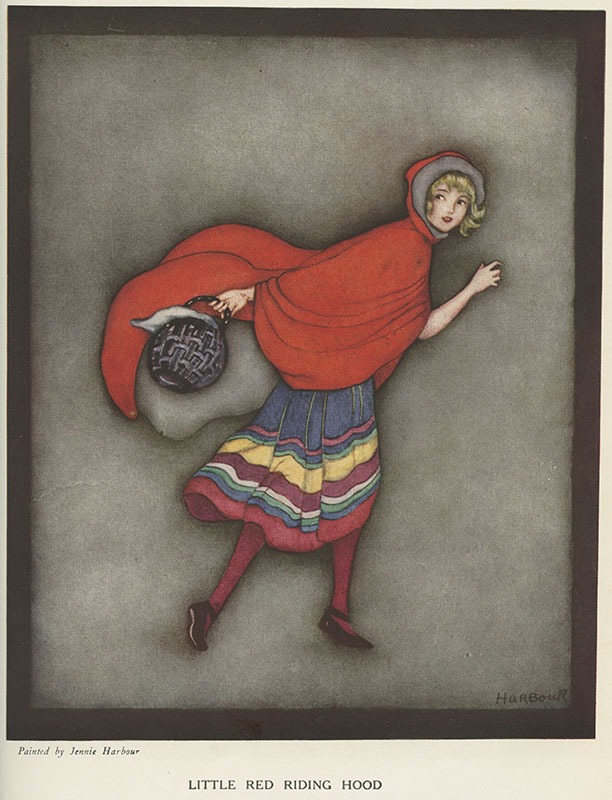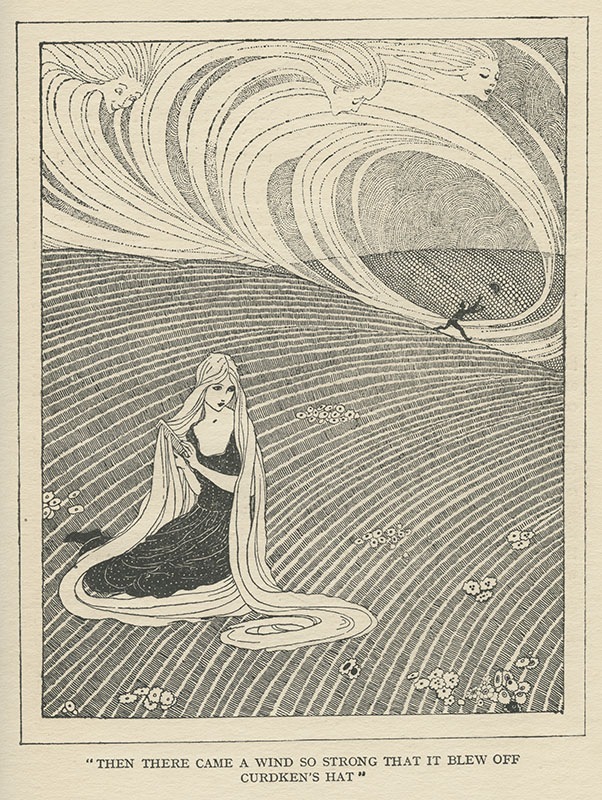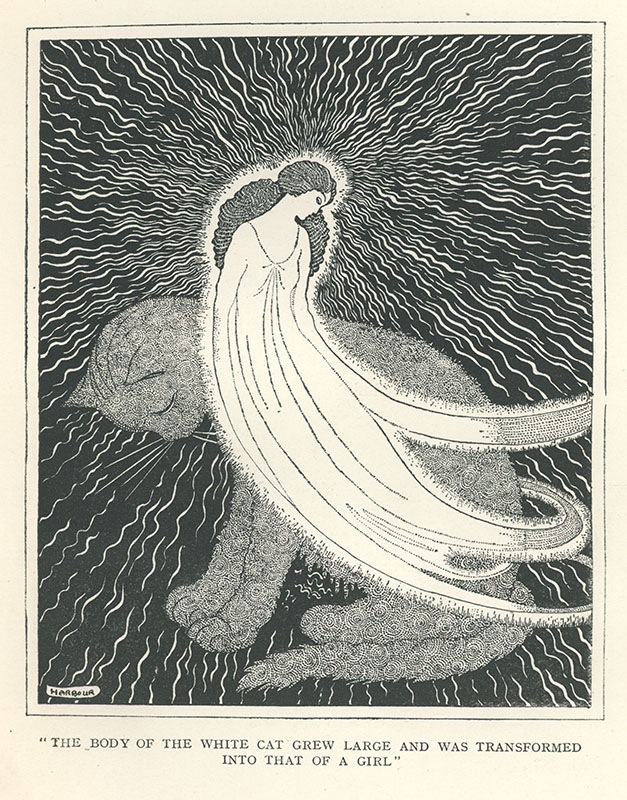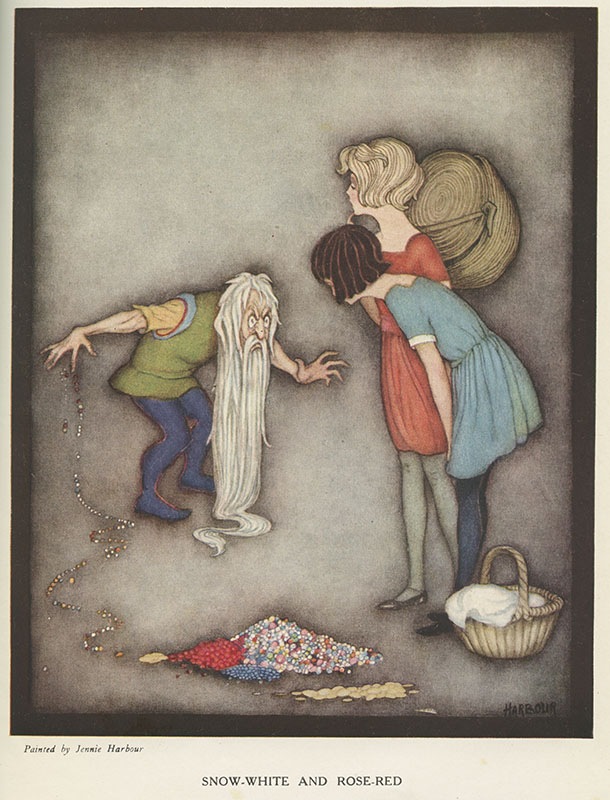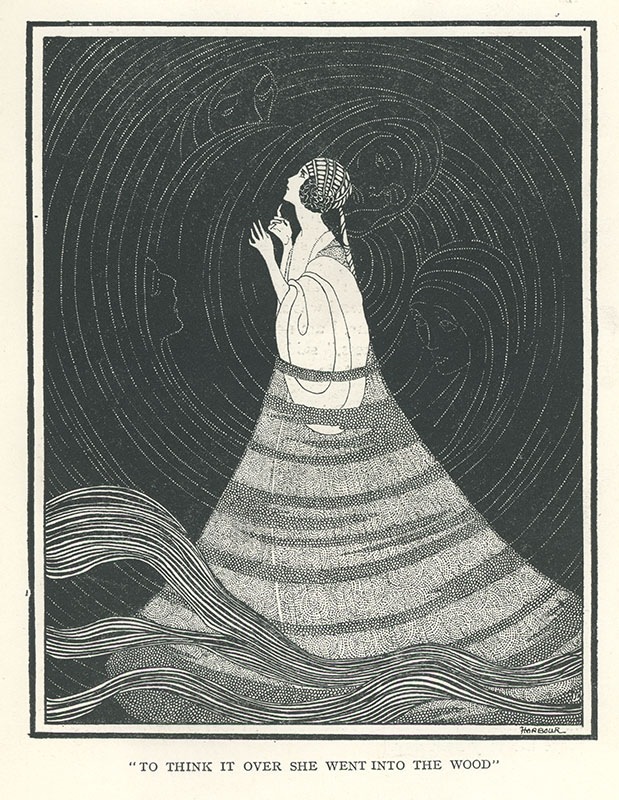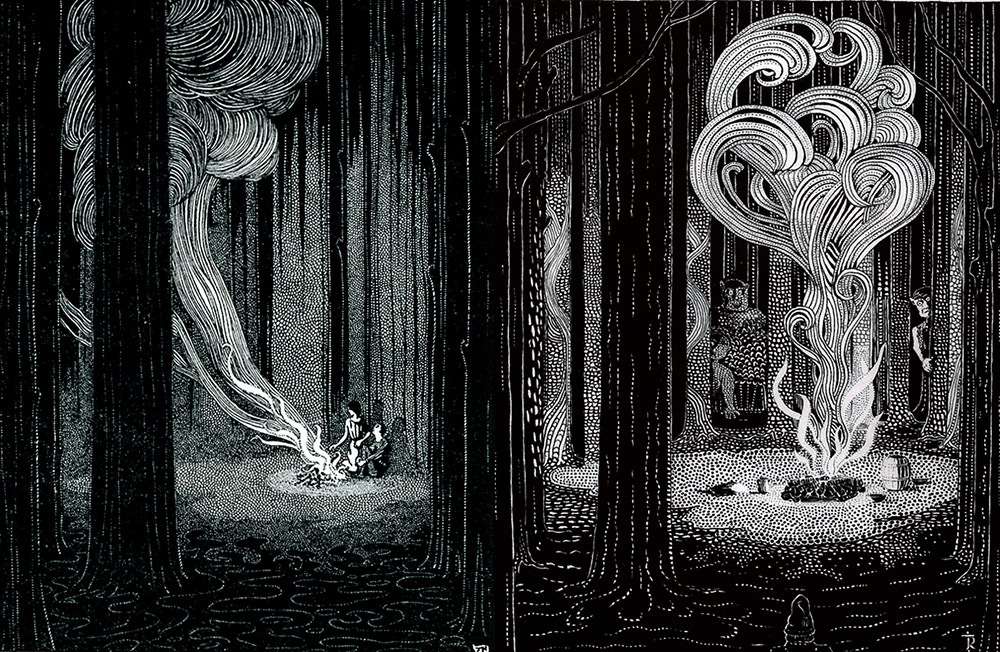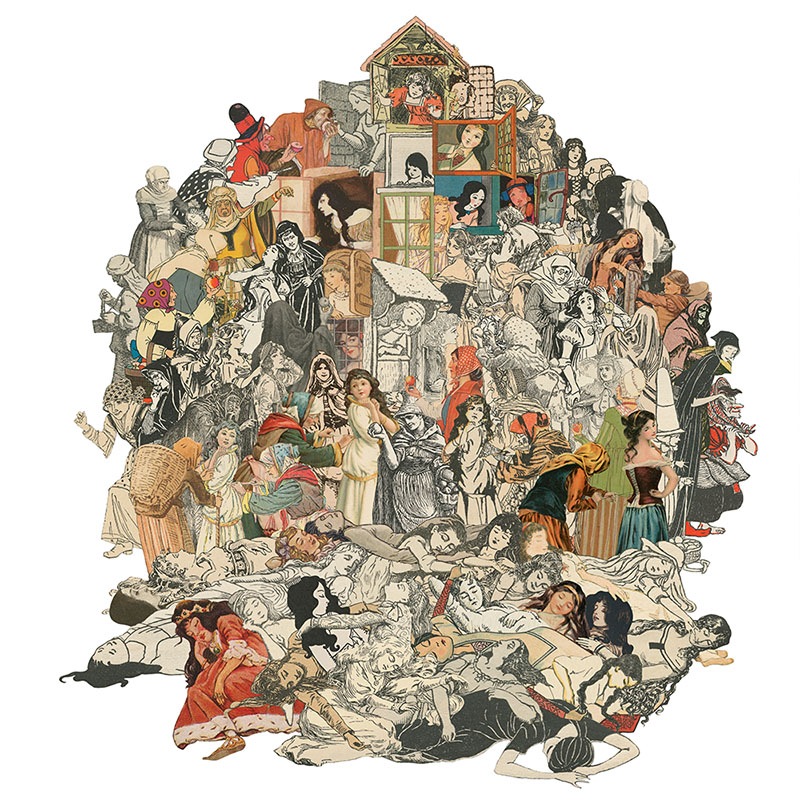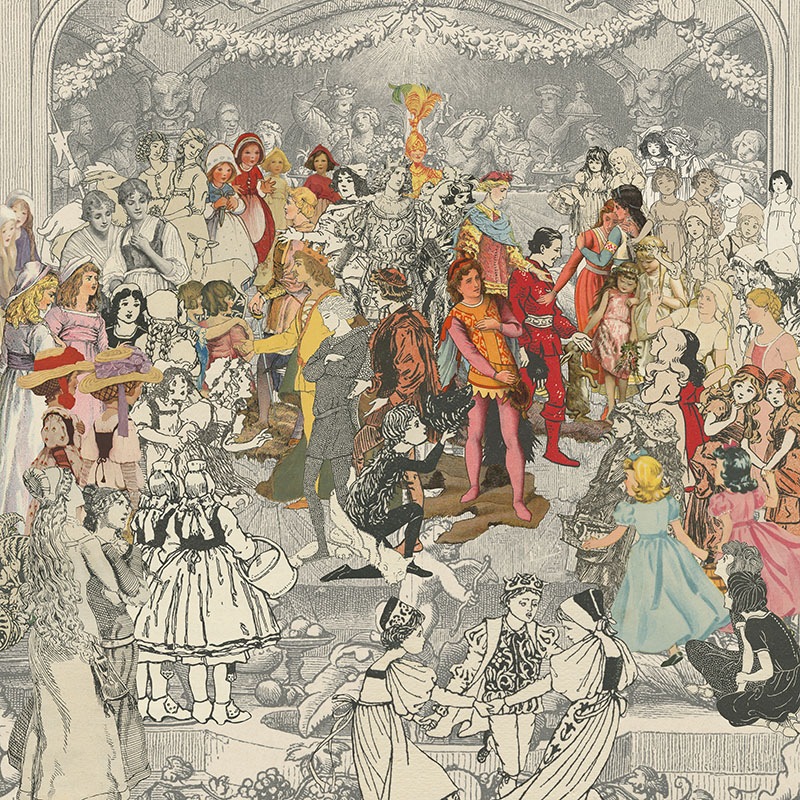Creative Colloquies, Thanksgiving Edition: Stephanie Williams
I pulled up the above picture on Instagram the other day and was struck by how some artists are so good at blending art and life into some kind of seamless, perpetual performance just by being themselves.
Five or so years ago, I found myself heading from New Mexico towards Washington, D.C., with the idea that I would roll up, invest in the local art scene, and live happily ever after. While that didn’t quite happen, I did have the pleasure to meet Stephanie Williams as a co-member of the two-year DCAC Sparkplug artist collective program, and have followed and admired her work ever since. Stephanie is an amazingly talented multimedia artist who also excels at the art of living and it was my pleasure to invite her to be a part of Mirror Mirrored, for which she has reimagined “Hans My Hedgehog.” I (virtually) sat down with her to catch up this week.
Hi Stephanie. Thanks for agreeing to chat. I’d just like to talk a little bit about your piece for Mirror Mirrored, then maybe segue into a few other topics. The Grimms’ tale “Hans my Hedgehog” is a pretty crazy story: the main character is cursed on birth, hated by his father, rides a rooster, herds pigs, and disfigures one princess before marrying another, inheriting a kingdom, and making amends with his dad. What attracted you to this tale?
What’s not tempting about this story? It exists in extremes. I felt that, perhaps, it was only the designation of “fairy tale” that prevented Hans from easily translating to a contemporary context. Hans, I’ve met this person before. He is a character who feels that his power has been taken. He is presumed to be deserving. He feels justified in committing violent acts in order to take his power back, no matter the consequences.
The story’s voice even backs this justification, asking that readers accept certain systemic hierarchies as truth no matter how extreme: of course nothing should stand in his way to regain power. Of course, Hans is owed a father’s daughter for providing the father directions home? Of course, Hans doesn’t rape said daughter, but is owed intimacy when she is not attracted to him? Of course!
When I made the work for this story, I noticed there were countless current examples in news stories and anecdotes from friends in which violent acts were also justified in order to maintain ridiculous hierarchies of power. This work doesn’t claim to have answers. Making this piece felt cathartic.
I think that these old stories might, at their best, pivot between giving us hope for another life and providing us catharsis for the one we have. Were there any other Grimms’ stories you were considering reimagining for Mirror Mirrored?
I am interested in the storytelling potential of material, so I was looking for something that offered that opportunity. There was a story about a mouse, a bird, and a sausage that lived happily in harmony as long as everyone stayed committed to their assigned job. Their whole world falls into despair when one of the characters prefers and takes the job of another character. I like using remnants, fragments, and pieces leftover that perhaps in another form, could suggest usefulness at one time, but in their disassembled state aren’t considered to be intuitively functioning.
I enjoy your disassembled, questionably functioning sculptures, but especially enjoy what happens when you make them actually function by animating them. How did you get into stop motion animation?
I had been making alter egos that reflected upon my conversation with an identity. Given my making ability, these pieces, stylistically, looked toylike instead of living. I was looking for a way to give them a larger sense of being, a way for them to really own their awkwardness and un-placeability. Animating seemed like a natural step in that direction.
I learned how to animate on film in grad school. I was the only grad student in my intro to stop motion class and my stuff was truly horrible. I was very slow as a builder and found myself using the most roundabout ways to get a desired effect. A fellow grad in my program was also interested in “learning” how to animate digitally, had a camcorder, a DSLR, some tools, and lighting, so we decided that we could toddle through it together. We worked so inefficiently since we didn’t know what we were doing, but after four or so months we came up with something fun. After we finished that project, I moved to D.C. without access to equipment, so I returned to making stationary work on a large scale. There’s something quite satisfying in the agency of being able to switch between media.
From those allegedly toddling early days, the technical skills I see in your animation work right now are amazing—from the detail to sound to the constant motion of all the figures. How do you keep track of all the moving parts as a one person operation?
Thank you, but I am not a great animator. I’m still learning. Since I work by myself, this slow process is even slower. Animation and video processes have changed so much and I’m constantly catching up. I work with a traditional x-sheet (notes linked to each frame that I take, which tracks movement when I’m compiling photos). I also have visual aides with each camera angle: a crude drawing that diagrams all the moving pieces per shot, what direction they move, how much they move, how much they stand still, etc. It’s not necessarily a lot to think about, but it is very much a lot to keep track of. Sometimes, even listening to music is too distracting because I have to be so mentally present when I’m working; there is no autopilot. It’s tiring when shooting, but it’s worth it when I’ve been shooting for hours and am able to stop and finally preview these shots in motion. Sound, on the other hand, is more intuitive. I try to collect sounds that I find interesting or at least make a note of something that I should record. I just spend a lot of time with headphones on, re-editing until it sounds and feels right.
Aside from the technical details, I love the imagery in your new piece, Pinoy Ploy—which I believe recently screened at the Studio Museum in Harlem. Could you talk a little about the inspiration for the visuals in your work?
Thanks again! Within many of my projects, I find myself looking to things that disgust. The act of disgust suggests a process of ranking, of organizing into hierarchies what is tasteful and what is not. It doesn’t really leave a lot of space for subjectivity. The work for this piece looked to the hierarchies linked to American-ness, looking to map our value systems through food, as well as the role that stereotypes play when appropriating the foods of marginalized communities.
Until recently, it was difficult to find a Filipino restaurant. I found Filipino food at friends’ houses or my own since this food hadn’t translated well into mainstream American tastes. There are so many places now that feature Filipino food and I find myself wondering if we have finally found a more accepting audience or if I need to be more skeptical. I looked to other examples of once deemed disgusting foods making their way into mainstream taste and thought most obviously of Uncle Ben’s and Aunt Jemima.
The protagonist in my animation is a Balut (a fermented fertilized, half-formed duck egg). I chose this because Balut is a literal hybrid and a food that when featured on American television is as a food dare. I also looked to many portraits of Spanish colonizers (the Philippines was under Spanish rule for hundreds of years and an American territory before claiming independence in 1946). I wanted a colonizers’ presence, but wanted to play with who is traditionally in control of an American narrative.
Sidetracking to food for a minute, because it’s been far too long since I’ve been back to the District, and because (insert something about Michelin stars), what’s your favorite restaurant or bar there right now?
I love the Public Option—my neighborhood pub. It’s like having a drink in your friend’s living room. Some wonderfully generous folks, Bill and Kathy, run it. It’s so rare to run into people that make caring so commonplace. My favorite restaurant is my own kitchen. My partner, Cheech is an amazing cook and is always up for trying new things, so I follow her lead.
Awesome. Ok, back to narratives. They are such powerful forces in our lives, both the ones we encounter and the ones we make ourselves. Did you have a favorite story as a kid or now?
I loved and still do love Elizabeth Taylor movies, Taming of the Shrew, Who’s Afraid of Virginia Woolf, and yes, Cat on a Hot Tin Roof with Paul Newman, especially the scene where Big Daddy, played by Burl Ives, rants to Sister Woman (Madeline Sherwood) about the smell of mendacity: “Can you smell the mendacity, Sister Woman?” She answers, “Well Big Daddy, I don’t even know what that is!”—one of my favorite call and responses when I was six. Brick (Newman) participates in this rant, driven to tears thinking of his own homosexuality and stating that he too can “smell the mendacity” and is “tired of all lies and liars!” I, of course, had no idea as to what any of this meant then, but I loved the plot’s crescendos. Time stood still in this movie, leaving little room for you to process one monologue before another began.
A few years back, I watched as you helped students construct their own narratives as you taught intro to stop-motion animation at James Madison University. What do you think is the relationship between being a full-time professor and a practicing contemporary artist?
I feel incredibly lucky, sometimes undeserving, to have access to these luxuries: a singular job, a job that I’m invested in, and a job that’s invested in me. I’ve been a teacher for about a decade at James Madison University and what I’ve noticed in that time is that teaching allows me to pay attention to things that I wouldn’t normally pay attention to or have the time to pay attention to. I am lucky to have access to a new generation of artists reacting to their worlds for the first time. They’re so excited all the time. Also, in some cases, teaching forces me to observe my own language within culture. I’ve become more interested in research that is, from its base, more curious rather than pieces that claim to be didactic.
And, finally, as I know you have a complicated relationship with turkeys, what did you wear for Halloween this year?
I was Jane Lane from Daria.
Thank you Stephanie! Have a Happy Thanksgiving.
Thanks! I’ve loved working on this project with both you and Michelle and I continue to learn so much from our conversations together. We fall down rabbit holes often and can’t wait until we slip into the next one.
You can see the videos Hans and Pinoy Ploy from Stephanie Williams below, her work in Mirror Mirrored: A Contemporary Artists’ Edition of 25 Grimms’ Tales, and more information at her website at www.stephaniejwilliams.com.

